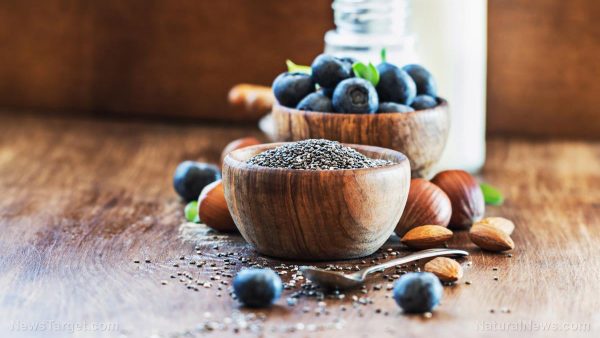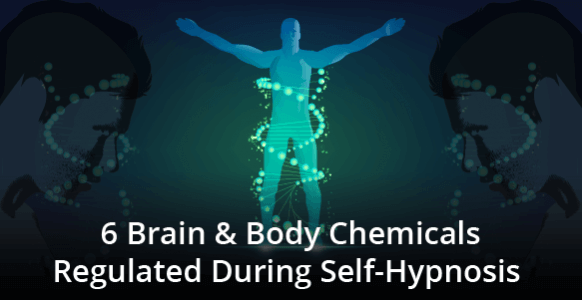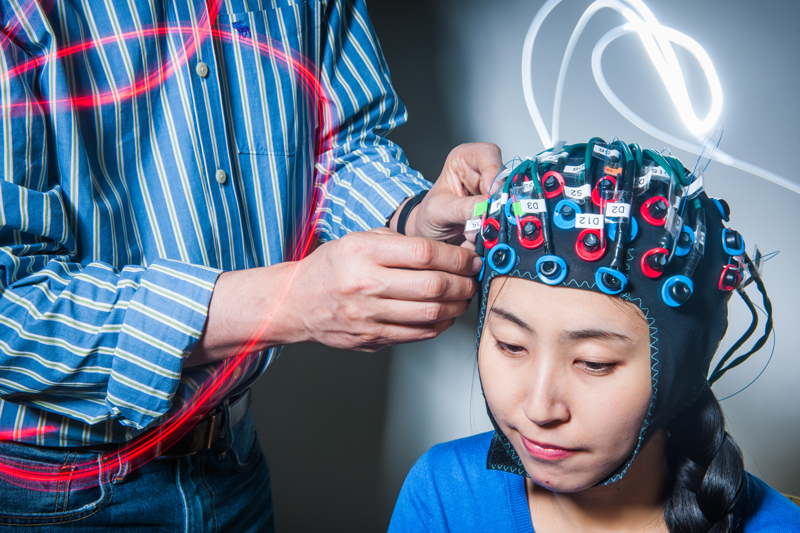Nature Knows and Psionic Success
God provides
New study links body clock to mood disorders

Messing with the rhythm of one’s internal body clock and sleep cycle may increase the risk of developing mood problems ranging from depression to bipolar disorder, scientists have found. The study , published in the Lancet Psychiatry journal on Tuesday, also linked interference with the body’s "circadian rhythm" to a decline in cognitive functions such as memory and attention span. The brain’s hard-wired circadian time-keeper governs day-night cycles, influencing sleep patterns, the release of hormones and even body temperature. Earlier research had suggested that disrupting these rhythms can adversely affect mental health, but was inconclusive: most data was self-reported, participant groups were small, and potentially data-skewing factors were not ruled out. For the new study, an international team led by Laura Lyall, a University of Glasgow psychologist, analysed data – taken from the UK Biobank, one of the most complete long-term health surveys ever done – on 91,105 people aged 37 to 73. The volunteers wore accelerometers that measured patterns of rest and activity and had this record compared to their mental history, also taken from the UK Biobank. Individuals with a history of disrupting their body’s natural rhythm – working night shifts, for example, or suffering repeated jetlag – also tended to have a higher lifetime risk of mood disorders, feelings of unhappiness and cognitive problems, the researchers found. The results held true even after the potential impact of factors such as old age, unhealthy lifestyle, obesity and childhood trauma had been taken into account, the researchers said. The study cannot say conclusively that body-clock disturbances are what caused the mental risk, instead of the other way round. But the findings "reinforce the idea that mood disorders are associated with disturbed circadian rhythms", said Lyall.
Stunned scientists find BLUEBERRIES are better at destroying cancer cells than conventional radiation therapy alone

( Natural News ) Cervical cancer strikes close to 13,000 women each year , claiming over 4,200 lives. Traditional treatment options include surgery to remove the affected tissue, radiation therapy using high energy x-rays to destroy cancer cells, chemotherapy drugs to destroy the affected cells (although healthy cells are killed too), or a combination thereof. However, these treatments are invasive and have low success rates. Now, a study by researchers from the University of Missouri-Columbia has confirmed that blueberry extract not only enhances the effects of radiation therapy – one of the most popular treatments for cervical cancer – but is even more successful than radiation at destroying cancer cells. A radiosensitizer turns out to be a potent treatment The University of Missouri research team wanted to investigate the use of blueberry extract as a radiosensitizer – a non-toxic, natural substance which enhances the efficacy of conventional cancer treatments like radiation and chemotherapy. The team previously had success treating prostate cancer using a polyphenol in red grapes called resveratrol as a radiosensitizer . To their surprise, blueberry extract not only proved to be a powerful radiosensitizer, but was shown to be an even more effective cervical cancer treatment than radiation. Study participants were divided into four groups: The first group was only given radiation therapy; a second group received only blueberry extract; a control group received no treatment at all; and a fourth group received a combination of both radiation therapy and blueberry extract. Support our mission and enhance your own self-reliance : The laboratory-verified Organic Emergency Survival Bucket provides certified organic, high-nutrition storable food for emergency preparedness. Completely free of corn syrup, MSG, GMOs and other food toxins. Ultra-clean solution for years of food security. Learn more at the Health Ranger Store . The radiation-only group exhibited an […]
With plastic pollution in the oceans at 16xs more than previously thought, is it even possible to clean it up?

( Natural News ) There was a time when the sea was the go-to place for keeping the body clean and catching fresh fish free from harmful chemicals. Beach lovers didn’t think twice about swimming there because they knew it was perfectly safe, and good for their health besides. But recent figures show that those who hesitate to swim at the beach have good reason to do so. A Great Pacific Garbage Patch is threatening the health of humans and the lives of sea creatures that live there. The humongous patch is twice the size of Texas and thrice the area of France. It is home to 80,000 tons of debris, which scientists estimate is equivalent to 1.8 trillion pieces of glow sticks, nets, bleach bottles, straws, toys, and drums. A three-year mapping project conducted by eight organizations showed that the garbage patch cuts across over 600,000 square miles of water between California and Hawaii. The National Oceanic and Atmospheric Administration marine debris program funded research by Beth Polidoro, assistant professor of environmental chemistry in the School of Mathematical and Natural Sciences at Arizona State University on plastic litter and microplastics in places near marine ecosystems. Her findings reveal that the garbage patch was discovered in the late ’80s. Its size has exponentially grown since. The culprit: plastic use and discards, which are expected to balloon to over 400 million tons per year by 2020. Contributing to these frightening statistics are findings from Plastic Oceans , a global nonprofit organization that looks into plastic pollution and its effects, that over 500 billion plastic bags and 35 billion plastic water bottles are thrown into the patch yearly. Get CLEAN FOOD and help support our mission to keep you informed : The Health Ranger Store lab verifies everything we sell with […]
Rebutting Big Pharma’s false arguments about the safety of vaccines

( Natural News ) Those in favor of vaccines, including government mouthpieces like the Centers for Disease Control and Prevention (CDC), insist that these medical interventions carry very few side effects, and that the benefits far outweigh any risks. Nonetheless, the public at large is never really given the opportunity to make that assessment individually, because those who try to warn others about the dangers of vaccines are dismissed as conspiracy theorists. Despite this, as noted by the Global Research Centre , there are at least four areas of concern when it comes to vaccines: autism, Alzheimer’s disease, aluminum and autoimmune disorders. Autism When parents report that their cognitively normal children have started exhibiting disturbing changes in behavior after a vaccine and have been diagnosed as autistic, there is often a media backlash and insistence that the parents are talking rubbish. However, Health Impact News reported that despite the medical community’s “hear no evil, see no evil” attitude, there are no fewer than 49 scientific studies confirming a link between vaccines and autism. And those studies stretch all the way back to 1943, when a Dr. Kanner noted that 11 children became “withdrawn, uncommunicative and displayed … odd behaviors” – a group of symptoms later referred to as “autism” – after receiving the smallpox vaccine. Representative Dan Burton, addressing the House Oversight Committee Hearing on Autism held in Washington D.C in 2012, noted, “We have gone from one in 10,000 children with autism to one in 88. It is worse than an epidemic, it is an absolute disaster.” Support our mission and enhance your own self-reliance : The laboratory-verified Organic Emergency Survival Bucket provides certified organic, high-nutrition storable food for emergency preparedness. Completely free of corn syrup, MSG, GMOs and other food toxins. Ultra-clean solution for years of food […]
Rampant mobile phone use causing brain tumors to skyrocket… while corporate-run media remains in denial

( Natural News ) Is your cellphone giving you brain cancer? New research highlights the potential dangers of increased mobile phone use. Cellphones have become ubiquitous in Western societies, and now evidence suggests that they could be behind the dramatic rise in a rare type of brain tumors. Experts say that cases of a malignant brain tumor known as Glioblastoma Multiforme (or GBM) have doubled since 1995. GBM is an aggressive and often fatal type of cancer, and used to be far less common than it is today — now there are nearly 3,000 cases of GBM in England alone. Scientists from Physicians’ Health Initiative for Radiation and Environment (PHIRE) have analyzed 79,241 malignant brain tumors over the last 21 years in order to come to this estimation. Speaking about their findings, Professor Denis Henshaw commented, “Our findings illustrate the need to look more carefully at, and to try and explain the mechanisms behind, these cancer trends, instead of brushing the causal factors under the carpet and focusing only on cures.” Recently, the group as a whole surmised that the increasing rates of frontal temporal lobe cancers “raises the suspicion that mobile and cordless phone use may be promoting gliomas.” Past research has come to similar conclusions about cellphones and cancer. In 2014, one study reportedly found that cellphone use was contributing to a three-fold increase in cancers of the brain. More recently, however, a study published in early 2018 found that cell phone radiation caused rare brain tumors in rats. The World Health Organization’s International Agency for Research on Cancer (IARC) has even declared that cellphone radiation is a “probable human carcinogen,” yet many mainstream health organizations and trendy scientists are denying the very real potential of cellphone-induced disease. Get CLEAN FOOD and help support our mission to […]
Just 10 walnuts a day can significantly lower your blood pressure

( Natural News ) If you have high blood pressure, eat 10 walnuts every day, as a study found that it can significantly lower your blood pressure . A team of researchers from the University of Wollongong, School of Medicine in Australia wanted to evaluate the effect of personalized dietary advice and a food supplement of 30 grams of walnuts each day on blood pressure in the intensive phase of a weight-loss trial. In the study, 377 participants were randomly divided into three dietary groups: general dietary advice or the control group, individualized advice, or intervention group supplemented with 30 grams of walnuts per day. The research team analyzed their dietary intake through self-reported diet history interviews conducted by accredited practicing dietitians. They also used urinary sodium and potassium excretion as biomarkers for estimation of dietary sodium and potassium intake. Results revealed that after three months, participants in all three groups lost weight significantly. However, the systolic blood pressure and diastolic blood pressure reductions were greatest in the participants who were given personalized dietary advice together with a daily supplement of walnuts. “Dietary patterns, key foods such as nuts and dietary levels of nutrients such as sodium and potassium can all affect BP [blood pressure], but these effects are also inter-related,” the researchers wrote. “The present analysis showed that individualized dietary advice, strengthened by a daily supplement of a healthy food, 30 grams walnuts, resulted in greater decrease in urinary Na:K [sodium-to-potassium] ratio, a parameter associated with lower BP.” Sponsored solution from CWC Labs: This heavy metals test kit allows you to test almost anything for 20+ heavy metals and nutritive minerals, including lead, mercury, arsenic, cadmium, aluminum and more. You can test your own hair, vitamins, well water, garden soil, superfoods, pet hair, beverages and other samples (no […]
Journaling Can Boost Your Leadership Skills

Eric J. McNulty is the director of research at the National Preparedness Leadership Initiative and writes frequently about leadership and resilience. Our lives are awash in digital. Each electronic pulse pushes us to respond instantly. Reply. Like. Share. There is seemingly no beginning and no end to the onslaught. But the beauty of the human brain isn’t its ability to render snap judgment and instantly weigh in on a topic electronically. Quite the opposite. Its greatest capacity is a higher level of thought: to process disparate bits of information, find patterns, and create meaningful dialog and action over time. All of this serves to boost our leadership skills. This ability flows from our natural hardwiring. To benefit from it, you only need to slow down and let your inner genius emerge. To be sure, easing the pace of life is not so simple when bosses, subordinates, and family members assume you’ll be available online 24/7. It’s time to slow down and reset expectations. But how? A practice I have found useful, as have many of my executive education students and coaching clients, is centuries old: keeping a journal. Setting aside as little as 10 minutes a day to record your thoughts stimulates reflection critical to making sense of the fast-moving world around you, which is, in turn, essential to effective leadership. As a leader, you are challenged to perceive patterns from which opportunities and threats emerge. This, in part, makes you worthy of following. (As in actually following you in real life, not just your online persona.) A practice I have found useful, as have many of my executive education students and coaching clients, is centuries old: keeping a journal. Despite our current proclivity for keyboards and powerful computer processors, journaling is an activity best suited for pen on […]
Strawberries are the most pesticide-ridden crop you can eat

( Natural News ) Eating fruits and vegetables is vital for overall health, but what if every juicy bite contains a cocktail of toxic pesticides ? The Environmental Working Group (EWG) analyzed samples of conventionally grown produce tested by the U.S. Department of Agriculture (USDA) and found that nearly 70 percent were contaminated with pesticide residues. The USDA detected a total of 230 different pesticides and pesticide breakdown products on the thousands of produce samples analyzed, and EWG’s analysis showed that there are variations between the different types of produce. Each of these food items tested positive for a number of different pesticide residues and contained higher concentrations of pesticides than any other fruits and vegetables. According to the EWG findings, more than 98 percent of samples of apples, cherries, nectarines, peaches, and strawberries tested positive for residue of at least one type of pesticide. A single sample of strawberries revealed 20 different pesticides, while spinach samples had 1.8 times as much pesticide residue by weight than any other produce. The fruits and vegetables found to contain the highest pesticide residues among the produce samples are apples, apple sauces, blueberries, grapes, green beans, leafy greens, pears, peaches, potatoes, plums, spinach, strawberries, raisins, sweet peppers, tomatoes, and winter squashes. Meanwhile, the ones in the low to moderate pesticide residue score are apple juice, avocados, bananas, beans, broccoli, cabbages, cantaloupes, carrots, cauliflower, celery, corn, eggplants, grapefruits, lentils, lettuce, onions, oranges, orange juices, peas, prunes, summer squashes, sweet potatoes, tofu, tomato sauces, and zucchini. Sponsored solution from CWC Labs: This heavy metals test kit allows you to test almost anything for 20+ heavy metals and nutritive minerals, including lead, mercury, arsenic, cadmium, aluminum and more. You can test your own hair, vitamins, well water, garden soil, superfoods, pet hair, beverages and other […]
MIT study says that thanks to Roundup, our brains don’t heal as fast as they used to

( Natural News ) If it seems like you’ve been hearing more about traumatic brain injury in the news lately, it’s because this type of injury is on the rise, and experts believe this is because the popular weed killer Roundup is causing brains to be less resilient than they used to be. Every year in the U.S., there are as many as 3.8 million concussions in sports, so it’s no wonder that 89 percent of American parents worry about their children getting hit in the head. Baltimore’s Sports Medicine Research Center reports that sports-related concussions climbed by nearly 16 percent in the ten years from 1998 to 2008. Emergency rooms saw a 60 percent rise in traumatic brain injury visits for kids and teens from 2001 to 2009, even as youth sports participation dropped overall. A pair of MIT researchers carried out a study to look at how modern brains are healing after such injuries. Senior Research Scientist Dr. Stephanie Seneff and Nutrition Specialist Wendy Morey determined that our modern diets are to blame, with environmental toxins and a serious lack of nutrition reducing our brains’ resiliency. How does Roundup affect the brain? Glyphosate, the active ingredient in Roundup, can affect the brain in many ways. It depletes the stores of sulfates in neural tissues, leaving them particularly vulnerable to being jostled in a sudden impact. It also disrupts your body’s absorption of nutrients. For example, it interrupts the synthesis of B vitamins and glutathione, a major brain antioxidant. In addition, it destroys the balance of good and bad gut flora in the digestive system, spurring the formation of formaldehyde that can breach your blood-brain barrier. It is also believed to help aluminum cross this essential barrier, allowing it to enter the brain, where it makes it harder […]
Last year’s flu vaccine was a total bust, yet the CDC claims it was a “grand success” – Here’s the truth of what happened

( Natural News ) The Centers for Disease Control (CDC) claims that last year’s flu vaccine was a “grand success.” Newly appointed CDC director Robert R. Redfield claimed the influenza A and B vaccines were 36 percent effective over 2017-2018 flu season. He tweeted praise on the vaccinated because they “reduced risk of getting sick with the flu and having to go to the doctor by about one-third.” Even though 36 percent effectiveness is scant and meaningless for a product that promises protection against serious disease, this number is NOT based on absolute risk reduction (ARR). Instead, the CDC bases its vaccine effectiveness numbers on something called relative risk reduction (RRR), a vague and misleading postulation that exaggerates the vaccine’s effectiveness. Their numbers are then echoed by the mainstream media to hide the real failure of the flu vaccine. A more accurate figure for vaccine efficacy can be calculated by configuring the absolute risk reduction. This figure, which we will calculate below, is only about one percent. On top of misrepresenting the data, the CDC omits five other important factors that should be considered in determining vaccine effectiveness, including genetic mutations of flu viruses in vaccines, the shedding of flu viruses from vaccines, weakened humoral immunity after vaccination, the importance of the individual’s terrain in determining outcomes, and vaccine side effects, which can cause flu like illnesses, secondary infections, and neurological events. As we will explore, there is no reliable evidence linking flu vaccination to a flu reduction in the population. The shot actually causes harm to the vaccine recipient and is prone to shedding, increasing the likelihood that more people will become infected with mutated live virus strains. Get more news like this without being censored : Get the Natural News app for your mobile devices. Enjoy uncensored […]
Turmeric Has Strong Brain-Healing Effects Against Depression

VitaBreeze Curcumin formula contains 50 percent more curcumin than other brands. For every capsule, consumers are able to get 750 mg of curcumin plus 5 mg of black pepper. ( Newswire.net — May 14, 2018) Orlando, FL — According to some researchers, turmeric is one of the oldest and most therapeutic spices that many people are still using nowadays. It is believed to fight various diseases and disorders, including ones that affect the brain. Turmeric has strong brain-healing effects against depression. Some researchers state that the proteins called neurotrophins are required for toe function and survival of brain cells. The brain derived neurotropathic factor (BDNF) is a protein that plays an essential role in neuron formation, memory and learning. When the BDNF signaling encounters certain issues, it could lead to the progression of neurodegenerative diseases or neuropsychiatric diseases. In an animal model involving non-induced depression, the researchers found that curcumin could exert potent anti-depressant effects. It is worth mentioning that in this study, depressive symptoms were not experimentally induced but were rather a result of genes. Decrease in BDNF levels led to depression. In the study, it was found that the use of curcumin decreased depressive symptoms simply by improving BDNF levels. The researchers concluded that curcumin could be a long lasting and effective natural antidepressant. Curcumin is a phytochemical in turmeric. It contains a variety of pharmacological agents, such as androgenic, antifibrotic, genoprotective, antifungal, and anti-inflammatory properties. It also has antibacterial, anticarcinogenic, antiviral, renoprotective, anticoagulant, antiseptic, antioxidant, antibiotic, antimicrobial, antitumor, immunomodulating, anticatabolic and insulin- sensitizing agents. In addition to attenuating depressive symptoms, curcumin could also aid in promoting BDNF levels. This action offers protection to memory and cognition against the deleterious effects of stress and depression. In a variety of animal studies, it has been confirmed that the […]
What Is Self Hypnosis Used For? Discover How It Regulates These 6 Essential Chemicals So You Can Live A Happier & Healthier Life

It’s a popular question… “What is self-hypnosis used for?” Self-hypnosis is an effective technique that allows you to achieve an altered state of consciousness so you can make profound transformations in your life . For example, you can use it to get rid of a bad mental habit, such as rumination. Or for finding answers to questions and solutions to problems. For wiping away limiting beliefs that are holding you back; or making peace with a traumatic event from your past that is preventing you from living your life to the full. Or you can use it to improve things, such as your self-confidence or your ability to learn things quickly. The reason self-hypnosis is such a powerful tool is because it allows you to connect with your unconscious mind – which is where you can access your full potential, innate creativity and empowered self. Self-hypnosis a little like meditation, except more goal-orientated , which is why many success-driven people are drawn to it. The Many Uses Of Self-Hypnosis It’s no wonder that self-hypnosis is growing in popularity across the globe. Just look at what you can accomplish when you put it to use. As well as the things already mentioned, you can: Boost confidence and self-esteem Fight phobias Improve your relationships Manage pain Set achievable goals Relax Boost creativity Amazing, right? It’s all about tapping into your unconscious mind and accessing your own inner resources. And the same technique will help you improve your happiness, well-being and stress levels by boosting specific brain and body chemicals . But how? To get a better understanding of exactly how self-hypnosis works at a biological level, we thought we’d look into the chemicals that are potentially released or stimulated during hypnosis. And here’s what we discovered. 1. Serotonin: Get Happy With […]
Why mindful breathing keeps your brain healthy and young

Yogis, non-yogis, long-term meditators, and short-term ‘dabblers’ alike will all agree that meditation improves focus. But, until now, no studies had shown how breathing influences attention in the brain. New research explores the neurophysiological effects of controlled breathing. Mindful breathing exercises can do wonders for your brain, a new study suggests. Lately, more and more studies have confirmed that yoga and mindfulness benefit the brain as much as the body. Just 25 minutes of yoga or mindfulness have been shown to improve brain function and boost energy levels, for example. Yoga can make you more resilient to stress , and some studies have even found the molecular explanation for this; practicing either yoga or mindfulness can reduce the genetic changes that lead to stress . As a wonderful perk in addition to all of the benefits above, meditation may also be the solution to age-related cognitive decline. A recent study has suggested that the practice can keep our brains healthy and youthful in the long run — but the findings were just observational, so the study could not explain causality. However, new research may help us to understand the "why" and "how." Some neurophysiological reactions that occur as a result of breathing-centered meditation practices are brought to light in the new study, which was led by Michael Melnychuk, a Ph.D. researcher at the Trinity College Institute of Neuroscience in Dublin, Ireland. In the paper — which is published in the journal Psychophysiology — Melnychuk and his colleagues show how controlled breathing affects levels of a neurotransmitter called noradrenaline , a "stress hormone" that can cause our hearts to beat faster and our pupils to dilate when we’re excited. In the right amount, the researchers explain, noradrenaline creates new connections between brain cells, and the study centered on how levels […]
Neuroscientists look at brain stimulation as an alternative treatment for depression

( Natural News ) In search of a way to treat depression, Philadelphia-based neuroscientists found a pathway in the brain circuitry of mice, and reported that stimulating this path causes animals to take up “anti-depressive” behavior. According to an article in Medical Xpress , this discovery could lead to brain stimulation as way to alter depression in humans. Dr. Amelia J. Eisch of the Children’s Hospital of Philadelphia (CHOP) explained that major depressive disorder is a global health concern. While current treatments do work for many patients, they also have adverse side effects. Furthermore, the patients often end up getting depressed again. The current school of thought in neuroscience is that malfunctions in the circuitry of the brain lead to depression. Therefore, Eisch and her colleagues theorized the possibility of targeted treatment of the disorder by tuning a particular circuit. Eisch and her co-author, Dr. Sanghee Yun from CHOP’s Department of Anesthesiology and Critical Care, published the results of their study in the online journal Nature Medicine . Suppressing a protein in the entorhinal cortex increased brain stimulation In their study, the CHOP researchers experimented with the brain circuit called the entorhinal cortex (Ent). Their objectives were to investigate depressive-like behavior in addition to memory. The Ent circuit is located “upstream” of the hippocampus, an organ that controls memory and mood. Earlier experiments on animals and humans have shown that stimulating it enhanced memory and learning capacity. Study author Yun said their research group was the first to look for links between Ent stimulation and mood shifts. Get CLEAN FOOD and help support our mission to keep you informed : The Health Ranger Store lab verifies everything we sell with accredited testing for heavy metals, microbiology and food safety. Certified organic facility, ISO-accredited on-site laboratory, no GMOs or synthetic […]
How to Increase Blood Flow to the Brain

Insufficient blood circulation to the brain can lead to many mental issues, from mild to serious. But there are many ways to increase blood flow. Your brain is only 2% of your total body weight, yet receives 15 to 20% of the total blood supply. ( 1 ) There’s a lot going on up there, so your brain requires a disproportionate amount of energy and nutrients. A steady flow of blood delivers life-giving oxygen plus glucose, vitamins, amino acids, minerals, and other nutrients your brain needs to survive and thrive. Brain blood circulation also carries away things your brain doesn’t need such as carbon dioxide, toxins, and metabolic waste products. The blood supply keeps your brain hydrated — critical since your brain is over 70% water. ( 2 ) It brings your brain the hormones and neurotransmitter it needs to function and keeps your brain at a constant temperature and pH. ( 3 ) To do all this, one liter of blood flows through the 400 miles of blood vessels in your brain every minute! ( 4 ) But when circulation is restricted, brain cells suffer and can even die. There’s solid evidence that reduced cerebral blood flow puts you at risk for brain disorders like vascular dementia and Alzheimer’s. Clearly, maintaining sufficient blood circulation to the brain is of utmost importance to brain health. Symptoms of Poor Blood Flow to the Brain Common symptoms of inadequate flow to the brain include brain fog, mental fatigue, dizziness, light-headedness, memory loss, and frequent headaches. ( 5 , 6 ) Harvard researcher Dr. Datis Kharrazian, author of Why Isn’t My Brain Working? , looks for these signs of impaired cerebral blood flow in his patients: poor focus and concentration relying on caffeine or exercise to kick brain into gear unhealthy nails […]
NASA starts space study to see if sperm can still function in weightless environments

( Natural News ) Do sperm squirm the same way in space? That’s an interesting question that’s posed by the leading scientists at the National Aeronautics and Space Administration (NASA), which aims to learn exactly how sperm will function when placed out in space. To conduct this highly serious research work, NASA’s scientists have gone back to the basics of reproductive health in order to fully understand all the matters at play. More specifically, they haven’t just started studying sperm in isolation. Rather, they have looked into what would happen between a sperm and an egg if they were to unite out in space . The space agency is said to be in the middle of a comprehensive mission on the International Space Station (ISS) called Micro-11, which aims to look into how sperm gets affected by weightlessness in space. In charge of this investigation is NASA’s Ames Research Center, which is located in California’s Silicon Valley. It is said that very little is known about the science of reproduction in space, and that the Micro-11 mission is expected to shed some light on the subject for the very first time. To be more specific, the experiments are going to measure how well human and bull sperm functions in space. In a post on its official website, the space agency mentioned that studying reproductive biology and all the matters that are related to it in space can be useful because microgravity can have certain effects that simply won’t be present on Earth, where the normal rate of gravity is perceived by the human body. Get more news like this without being censored : Get the Natural News app for your mobile devices. Enjoy uncensored news, lab test results, videos, podcasts and more. Bypass all the unfair censorship by Google, […]
For your plant-based diet to be nutritionally complete, you have to avoid deficiency of vitamins and minerals usually gained from animal products

( Natural News ) If you plan to switch to a plant-based diet, you must look for alternative food items or supplements that provide vitamins and minerals that are usually obtained from animal products for your diet to be nutritionally complete . This, as well as other concerns regarding the main nutrients that may be lacking in a plant-based diet, were discussed by nutrition expert Conor Kerley spoke at the recent Nutrition in Medicine: A Focus on Plant-based Nutrition conference. In particular, he addressed the primary nutrients that are lacking in plant-based diets like vitamins D, B12, and A. Vitamin D – A vegan diet, according to Kerley, lacks vitamin D for the most part. This is can even be true in vegetarians — people who eat fish, eggs, fortified milk, and fortified cereals. People who follow a vegan diet can get ample vitamin D by eating certain types of sun-dried or UV irradiated mushrooms. Vitamin B12 – Since meat is the primary source of vitamin B12, people who solely adhere to a plant-based diet will usually lack this vitamin. “You can get vitamin B12 really easily from fortified foods and supplements,” he explained. In addition, vitamin B12 deficiency may be easy to prevent – but correcting it is a different story altogether. Vitamin A – The retinol form of vitamin A is lacking in plant-based diets, as it is obtained from animal liver and cod liver oil. However, its beta-carotene form is abundant in carrots, sweet potatoes, and other vegetables. Other nutrients may be present in plant-based diets, but in inadequate amounts. Get CLEAN FOOD and help support our mission to keep you informed : The Health Ranger Store lab verifies everything we sell with accredited testing for heavy metals, microbiology and food safety. Certified organic facility, ISO-accredited […]
The Yogi masters were right — meditation and breathing exercises can sharpen your mind

It has long been claimed by Yogis and Buddhists that meditation and ancient breath-focused practices, such as pranayama, strengthen our ability to focus on tasks. A new study by researchers at Trinity College Dublin explains for the first time the neurophysiological link between breathing and attention. Breath-focused meditation and yogic breathing practices have numerous known cognitive benefits, including increased ability to focus, decreased mind wandering, improved arousal levels, more positive emotions, decreased emotional reactivity, along with many others. To date, however, no direct neurophysiological link between respiration and cognition has been suggested. The research shows for the first time that breathing – a key element of meditation and mindfulness practices – directly affects the levels of a natural chemical messenger in the brain called noradrenaline. This chemical messenger is released when we are challenged, curious, exercised, focused or emotionally aroused, and, if produced at the right levels, helps the brain grow new connections, like a brain fertiliser. The way we breathe, in other words, directly affects the chemistry of our brains in a way that can enhance our attention and improve our brain health. The study, carried out by researchers at Trinity College Institute of Neuroscience and the Global Brain Health Institute at Trinity, found that participants who focused well while undertaking a task that demanded a lot of attention had greater synchronisation between their breathing patterns and their attention, than those who had poor focus. The authors believe that it may be possible to use breath-control practices to stabilise attention and boost brain health. Michael Melnychuk, PhD candidate at the Trinity College Institute of Neuroscience, Trinity, and lead author of the study, explained: “Practitioners of yoga have claimed for some 2,500 years, that respiration influences the mind. In our study we looked for a neurophysiological link that could […]
Lighting Up the Brain

Even family pets can inspire his inventive spirit. Whenever Boas’ wife traveled for work, she’d always call to make sure the cats were safely back inside for the night. Rather than policing the kitty door, Boas started puttering. He sketched out a system, built around an open-source microcontroller, to automatically log each cat’s return and report back. “He decided to build us, not a simple camera, but a sensor that detects and recognizes which cat is entering by the spectral signature of their fur,” says his wife, Maria Angela Franceschini . As Boas tinkered with his tabby tracker, he gently encouraged the pets in and out of the door—over and over again. “He terrorized my cats,” jokes Franceschini, also a leading neurophotonics researcher and an associate professor at Harvard Medical School . “And there were wires everywhere. You have no idea how many projects he starts.” “David is the pioneer of techniques and methods to use light to interact with the brain.” The Neurophotonics Center, the first facility of its kind in the United States and only the second in North America, pulls in 30 faculty from fields as diverse as biology, mechanical engineering, brain sciences, and nanomedicine. Its mission, says Boas, who formerly taught at Harvard Medical School and was the founder of the Optics Division of the Martinos Center at Massachusetts General Hospital (MGH), is to cultivate technologies that give researchers new insights into the brain. Most of Boas’ work is funded by the National Institutes of Health (NIH) and feeds into its ambitious BRAIN Initiative , a decade-long, multibillion-dollar project to speed the development and application of innovative neurotechnologies. Since opening in fall 2017, the BU Neurophotonics Center has started studies analyzing the brain as it recovers from a stroke, confronts autism, and slides into dementia. […]
Are you feeding your brain the right nutrients? Folate, vitamins B12, C, E, and D are crucial for mental health

( Natural News ) Feeding your brain the right nutrients, such as folate, and vitamins B12, C, E, and D are crucial for mental health . In a review, it was found that patients with the chronic mental disorder schizophrenia have low levels of these nutrients. A team of researchers from the University of Manchester , Belgium’s KU Leuven University , and the University of Western Sydney analyzed 28 study articles with a total of 2,612 participants. The research team discovered that low levels of the nutrients appeared to be present from the beginning of the illness and were associated with worsening of the disease. They saw a significant reduction in folate, vitamin D, and vitamin C in people with first-episode psychosis in comparison to the controls. In addition, they found that the difference in vitamin D levels between first-episode psychosis and controls was the most striking of all nutrients. One notable study found that differences in folate levels were because of genetic difference in folate metabolism instead of dietary influences. Two studies with small sample sizes revealed large deficiency of vitamin C in first-episode psychosis. This is parallel with data indicating low fruit and vegetable consumption in this population. In addition, a single randomized control trial in patients experiencing first antipsychotic treatment has shown 500 milligrams (mg) of vitamin C each day significantly lessens psychiatric symptoms. Low levels of folate and vitamin B12 were also often seen in patients with schizophrenia, where worsening of symptom severity were also observed. Supplementation of B-vitamins may significantly reduce symptoms of schizophrenia and reverse some neurological deficits linked to the illness. Moreover, vitamins C and E – which are antioxidants – are also lacking in chronic schizophrenia. This potentially contributes to the increased oxidative stress seen in this population. Support our mission […]
